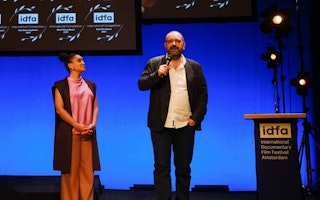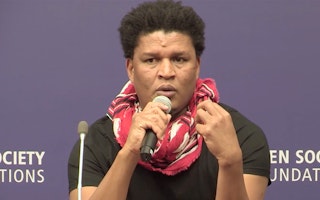Four Photographers Share Their Visions for Change
By Anna Overstrom-Coleman
How would you use documentary photography to not only share a particular community’s experience, but enrich it as well? What tools would you use? What goals would drive your work?
Meet the 2013 Audience Engagement Grantees. These four visual advocates are seeking concrete, sustainable change on issues to which they are deeply committed. They have sought out partners who are helping them to use photography in innovative ways. And they are listening to affected communities and actively working with them on every step of the process.
These grantees are pushing the boundaries of their knowledge, their medium, and their reach for impact. We believe in supporting such intrepid efforts, and we hope you’ll follow their work over the next year as we learn with them.
Jason DaSilva in partnership with AXS Lab
How would your life change if you were diagnosed with a degenerative disease? After filmmaker Jason DaSilva learned he had multiple sclerosis, he lost the ability to walk unassisted, and with that, to move about his hometown of New York City freely and spontaneously.
To help others with mobility challenges navigate their neighborhoods with more autonomy and flexibility, DaSilva and his partners at AXS Lab have created a mobile app and online tool, AXS Map, which allows users to review and rate businesses’ accessibility. A new feature on their platform enables users to upload photographs when sharing feedback.
Elyor Nematov in partnership with Central Asia on the Move
Elyor Nematov has watched family members and friends leave their homes in Central Asia for better opportunities in Russia. He has photographed migration’s impact on those who are left behind, and the experience of the journey itself. More recently, he has documented life in foreign cities for fellow Kyrgyz, where many arrive without official documentation and are often subjected to hazardous working conditions.
Nematov and his partners at Central Asia on the Move want youth to understand their rights and know how to access support networks before leaving Kyrgyzstan. Nematov will exhibit his photographs in the southern cities of Batken, Jalalabad, and Osh while distributing resource guides on available legal, medical, and social services in Russia.
Peter DiCampo in partnership with Austin Merrill, the Learning About Multimedia Project, the Bronx Documentary Center, and Uncharted Digital
What if you are an outsider, but don’t agree with how a people or place are represented in mainstream media? How would you create an authentic alternative narrative and who would you share that with? Peter DiCampo, in partnership with Austin Merrill, the Learning About Multimedia Project (LAMP), the Bronx Documentary Center, and Uncharted Digital are piloting a curriculum program for New York City students using images from Everyday Africa, an online collection of cell phones images taken by photographers based in Africa. These images of daily life are intended to challenge stereotypical representations of the war-torn, poverty-stricken Africa so often portrayed in Western media.
Students will learn how to document their own neighborhoods, families, and culture as they are taught media literacy in the classroom. Project partners will develop a complementary interactive website where African photographers can upload content, providing Everyday Africa’s images with local and personal context.
John Willis in partnership with Lakota Circle Village, Lakota Peace Making Court, and KILI Radio Voice of the Lakota Nation
John Willis has spent 21 years photographing the Oglala Lakota Nation and bringing cultural programming to South Dakota’s Pine Ridge Reservation. He and his partners Lakota Circle Village, Lakota Peace Making Court, and KILI Radio Voice of the Lakota Nation share a deep concern with how Lakota youth have internalized outsider representations of their people and culture. To counter this, Willis will use images from his body of work Views from the Reservation as a catalyst for intergenerational dialogue on what Lakota values are missing from existing mainstream narratives.
Through open community forums and storytelling workshops, youth will use elders’ knowledge of Lakota history, language, and traditions to help guide them in creating their own narratives of what it means to be Lakota today. These projects will be exhibited at community centers throughout Pine Ridge Reservation and participants will share their experiences on KILI Radio.
Until October 2015, Anna Overstrom-Coleman was a senior program coordinator with the Open Society Documentary Photography Project.


